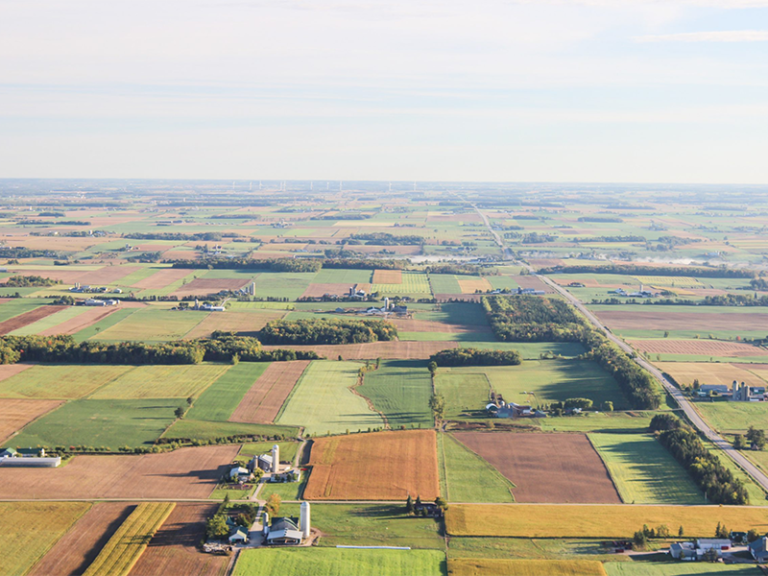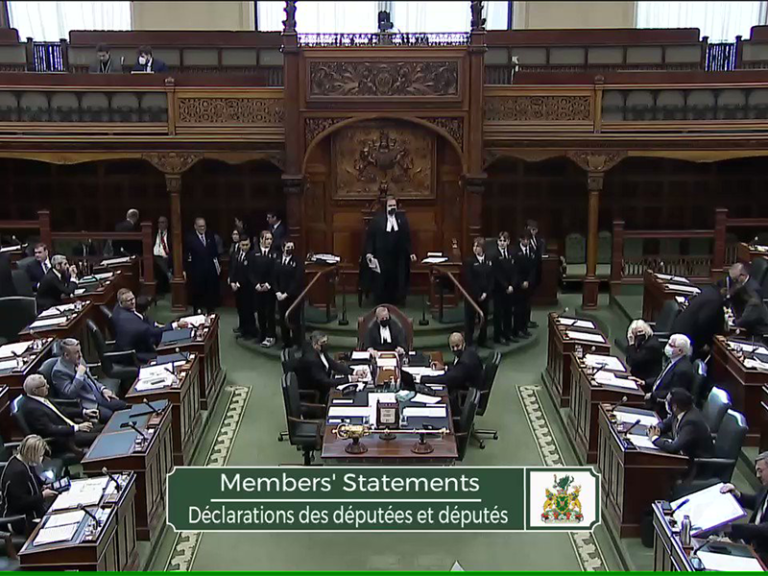First published: June 18, 2004
The following was submitted to The Port Hope Evening Guide on the
afternoon of 6/17/04 in
response to the editorial cartoon and editorial in Wednesday’s newspaper.
When I read the editorials in the newspaper I expect a certain amount of
opinion and quite often it makes sense and I find myself influenced by
the opinion of the community concern hashed out between the Managing
Editor and the Publisher.
What I’d like to know in the treatment of the residential class wind
turbine built in Alnwick/Haldimand Township is how the issue could
possible spin into a stab at ‘liberal rhetoric’ and the advances in
renewable energy construction in Ontario.
The focus should be on how Germany built 3,247 mW of wind electrical
generating capacity in 2001, roughly 10% of the base load need of
Ontarians and why in Canada, but most especially Ontario, we have laws
and a government political and departmental mentality that suggests wind
farming is the pursuit of people who are ignorant of the health benefits
of nuclear power generation.
In Germany, it is largely understood internationally that legislative
tools exist to level the playing field to allow farmers and cooperatives
in on the ground floor to build their own generating capacity. Look to
the province of Prince Edward Island where a commitment has been made to
advanced renewable wind tariffs to help farmers build wind — with an
awesome target of 100% of the provinces energy needs taken up by wind by
2015.
Last year, across Canada, a total of 96mW of wind power capacity was
built. A record for this country. Today, with an increased commitment to
double its financial commitment the feds are going to help build more.
Who knows if this will transcend whoever gets into government? It’s
anyone’s guess what the next party or leader is going to do to mitigate
pollution and firmly entrench greenhouse grass reduction strategies in
budget to help honor our Kyoto Protocol obligations.
What is ignorant is the suggestion that all areas of Northumberland be
equally treated as though the county were the industrial centre of the
province and that only strong centralized generating capabilities should
be built — but somewhere else because we either don’t like the noise or
we simply haven’t got the money or political will to empower ourselves
to get high voltage transmission lines built.
When did it cease to be vogue to focus on Northumberland’s 77,000
residents and unique demographic makeup (including excellent wind
resources) as a detriment to economic development in the style of urban
sprawl Toronto? Big wind is a rural economic development bonus. Mixing
up the Paterson’s concerns and big wind is ludicrous. Understanding how
big wind and the Roseneath turbine overlap with respect to planning
methodologies and municipal bylaws is really the issue.
Getting with the times would see decentralized, distributed energy
production from renewable resources including wind and solar. And never,
even in the wild imaginings of even the most fervent renewable energy
advocate, is it thought that these two technologies along with
geothermal resources could handle all of the need we currently have. But
with a little conservation and a lot of will to open legislative doors
to level the playing field and to put in appropriate legislative
leverage to level the playing field between the supply side and the
demand side, renewable energy has a chance to make a dent.
What is happening with Mr. and Mrs. Paterson near Roseneath is a
symptom, not of bad technology, but inappropriate planning at the
provincial, county and municipal levels. Somebody didn’t sit down at the
table when it was necessary to look ahead.
Let’s put ‘rhetoric’ aside and concentrate on looking at each problem
separately, not glomming them all together so that people just learning
how the read the wind can understand that a 20 kWh wind turbine is not
everything that renewable energy and systems are about or that big wind
poses some environmental threat and hearing loss health hazard.
Do people know that a turbine blade from a 1.8 mW Vestas spinning at 16
rpm has a calming effect as compared to the small turbine built by the
Paterson’s neighbors?
Cameco had no problem building big wind in Bruce County where they were
somewhat involved in spurring the draft of community appropriate
legislation. They are partners in the biggest wind farm in Ontario built
to date, having settled the planning wrangles to build wind there with
the cooperation of local residents and the farmer’s lands the turbines
comprising their 9 mW project are distributed on.
Wind power is not a total solution, and it does not fairly compete with
the likes of a nuclear generating station or, for that matter, the
Pembina Institute-favored CCNG fired power plants.
Renewable energy advocates already know all of this stuff. Frankly none
of them that I know support wind or solar as a panacea for all of the
province’s power problems. But we are in Northumberland. Wind resources
here are generally known to be of excellent quality, similar to tested
patterns in Prince Edward County or specifically where turbines have
already been built in Pickering and in Toronto at Exhibition Place. And
to dump on wind where it is favorable for development is like saying
rural economic development should give over to urban sprawl. That’s how
important decentralized, distributed renewable energy production really
is. From wind. From solar. And from geo-thermal.
Who cares if wind power is going to take care of everything and
everyone? In wind energy circles it is achingly apparent that even
though the province seems for wind power that it has done little to
level the playing field with respect to its getting built.
You have to know why that is important. And not all of it focuses in on
the numbers.
Again, it is the historical legislative prohibitions that need to be
solved and appropriate planning and environmental legislation that must
be put in place so that noisy turbines don’t get built where they aren’t
wanted. That takes discourse and honesty. Not rhetoric.
— 30 —
By the end of 2002 Germany owned roughly 50 % of all European Union wind
generating capacity after increasing its holdings by 3, 247 mW in 2001
alone to 12,001 mW.
Top five wind energy markets (installed capacity, in MW)
2001 2001 Year End 2002 2002
Additions Total Additions Total Year End
Germany 2,659 8,754 3,247 12,001
Spain 835 3,337 1,493 4,830
United States 1,695 4,275 410 4,685
Denmark 117 2,417 497 2,880
India 240 1,407 195 1,702


